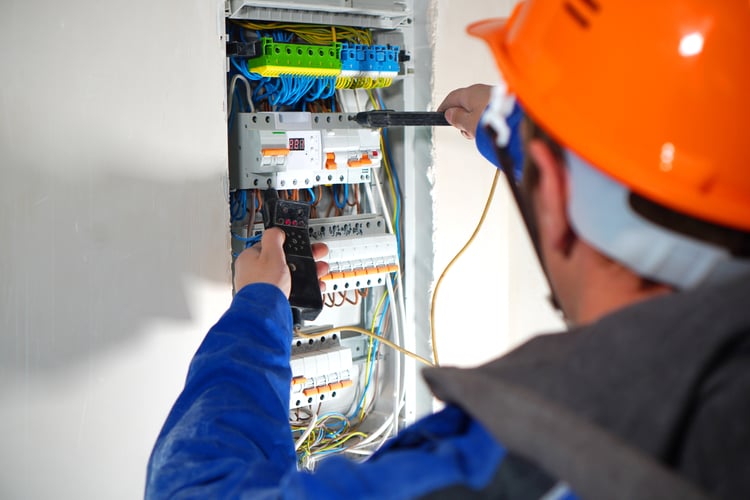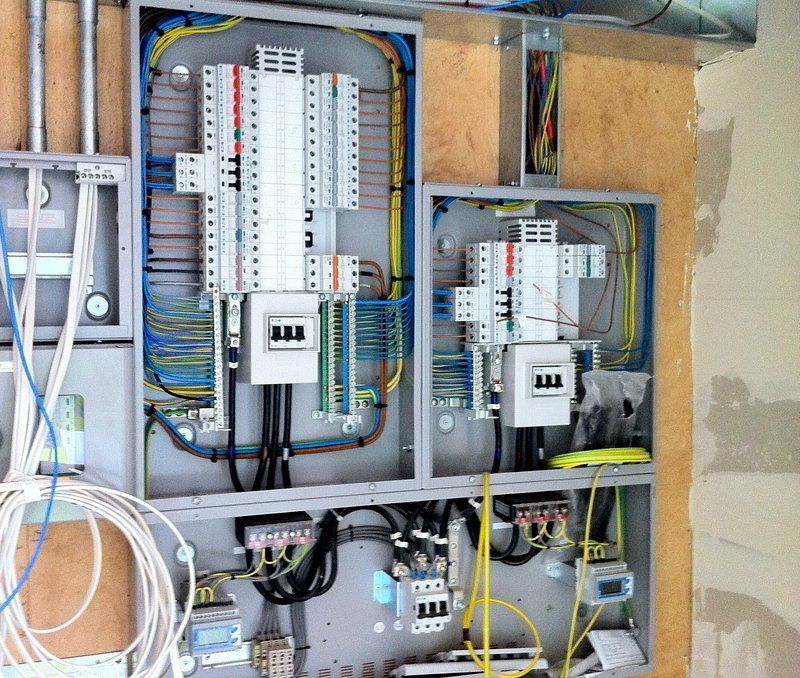Advanced BRE Automation Australia: Changing Your Automation Requirements
Advanced BRE Automation Australia: Changing Your Automation Requirements
Blog Article
Debunking Electrical Installment: Understanding Codes and Rules for a Lawful and Safe Arrangement
In the realm of electrical setup, adherence to codes and policies is vital to guarantee both legality and security. The complexities bordering electric job can be daunting, yet acquainting oneself with the well-known criteria is vital to navigating this area with self-confidence. By comprehending the details of the National Electric Code and regional building regulations, people can guarantee that their installments satisfy needed precaution and are in compliance with the law. The journey to demystifying electrical setup goes past plain knowledge with laws; it necessitates an extensive grasp of exactly how to implement risk-free electric practices properly.
Value of Electrical Codes
The adherence to electric codes is vital in guaranteeing the safety and security and dependability of electrical setups. Electric codes work as a set of requirements and guidelines that dictate the appropriate design, setup, and upkeep of electrical systems. These codes are established to decrease the threat of electrical dangers, fires, and other safety problems that may develop from faulty electric work.

Additionally, electric codes are regularly updated to integrate new modern technologies, ideal methods, and precaution. Remaining updated with these codes is important for specialists in the electric industry to ensure that their work satisfies the most up to date security standards. Ultimately, the value of electrical codes lies in developing a safe and efficient electric facilities that benefits both individuals and areas.
Key Regulations for Security
Several basic laws govern the security requirements in electric installations. One crucial regulation is the National Electrical Code (NEC), which provides guidelines for safe electric layout, installment, and assessment to protect people and building from electrical threats. The NEC covers facets such as wiring approaches, grounding, overcurrent defense, and equipment installment to ensure a secure electric system.
An additional critical policy is the Occupational Safety And Security and Health Management (OSHA) standards, which concentrate on the security of employees associated with electric installations (BRE Automation Australia). OSHA regulations include requirements for correct training, safety treatments, and personal safety devices to protect against workplace crashes and injuries
In Addition, the International Electrotechnical Compensation (IEC) requirements aim to harmonize electrical setup laws on a worldwide range. These requirements address problems like electrical devices security, electro-magnetic compatibility, and power performance to advertise uniformity and security in electrical installations worldwide.
Conformity with these essential guidelines is vital to guarantee the safety and security and legitimacy of electrical setups, safeguarding both individuals and property from the threats connected with electrical power.
Comprehending National Electric Code
Secret laws such as the National Electrical Code (NEC) offer necessary guidelines for safe electric layout, installation, and evaluation to ensure the protection of individuals and building from electric risks. The NEC, additionally referred to as NFPA 70, is a detailed set of requirements for electric setups that are upgraded every three years. It is established by the National Fire Protection Organization (NFPA) and is extensively embraced throughout the United States.
The NEC covers different facets of electric work, including circuitry techniques, grounding, overcurrent defense, and devices installation. It intends to secure people and residential property by resolving potential threats connected with electrical systems. Compliance with the NEC is original site usually applied by regional authorities having jurisdiction (AHJs), such as developing code officials and assessors.
Recognizing the NEC is important for electrical contractors, designers, and assessors to ensure that installations satisfy the essential safety needs. By sticking to the NEC standards, specialists can aid stop electrical accidents and make certain the dependability of electrical systems in household, commercial, and commercial settings.

Conformity With Neighborhood Structure Codes
Understanding and sticking to local building regulations is crucial for ensuring the security and conformity of electrical setups within a certain jurisdiction (BRE Automation Australia). Regional building ordinance differ from one community to an additional, and they are established to safeguard the wellness of passengers and homes. These codes describe particular demands for electric setups, such as the sort of electrical wiring to be used, placement of outlets, basing methods, and tons abilities. By conforming with neighborhood building ordinance, electricians can make certain that installments are done properly and meet the necessary security requirements.
When it comes to electric setups, failure to follow local building regulations can cause severe repercussions. Non-compliant setups might pose security risks, raise the danger of electrical fires, and cause pricey fines or legal issues. Additionally, insurance provider might refuse to cover problems resulting from setups that do not satisfy regional structure code demands. Therefore, additional hints it is crucial for electricians and professionals to remain informed around and strictly comply with the local building ordinance suitable to their projects.
Ensuring Safe Electric Practices
Exercising rigorous adherence to developed security protocols is important in the area of electrical installments to minimize prospective risks and ensure the health of individuals and residential or commercial properties. Security in electric work incorporates numerous elements, beginning with the appropriate training of personnel associated with installment, maintenance, and repair. It is crucial to follow manufacturer directions diligently when taking care of electric elements and equipment. Prior to beginning any kind of job, it is critical to perform an extensive danger evaluation to determine potential risks and apply preventive steps. Making use of personal protective equipment (PPE) such as protected handwear covers, safety and security glasses, and non-conductive shoes is non-negotiable to safeguard versus electric shocks and arc flashes. Regular tools evaluations, screening, and upkeep schedules are indispensable to identify and fix mistakes before they escalate into security risks. Adherence to proper lockout-tagout treatments throughout upkeep tasks is critical to protect against accidental energization Full Article of circuits. By focusing on risk-free techniques, electrical installments can work efficiently while lessening the possibility of mishaps or damage.
Conclusion
Finally, adherence to electrical codes and laws is essential for guaranteeing the safety and security and validity of electrical setups. Understanding the National Electric Code and compliance with regional building codes are important for a secure configuration. By following these guidelines and practicing secure electrical techniques, people can stop possible risks and guarantee the proper functioning of their electrical systems.
Report this page